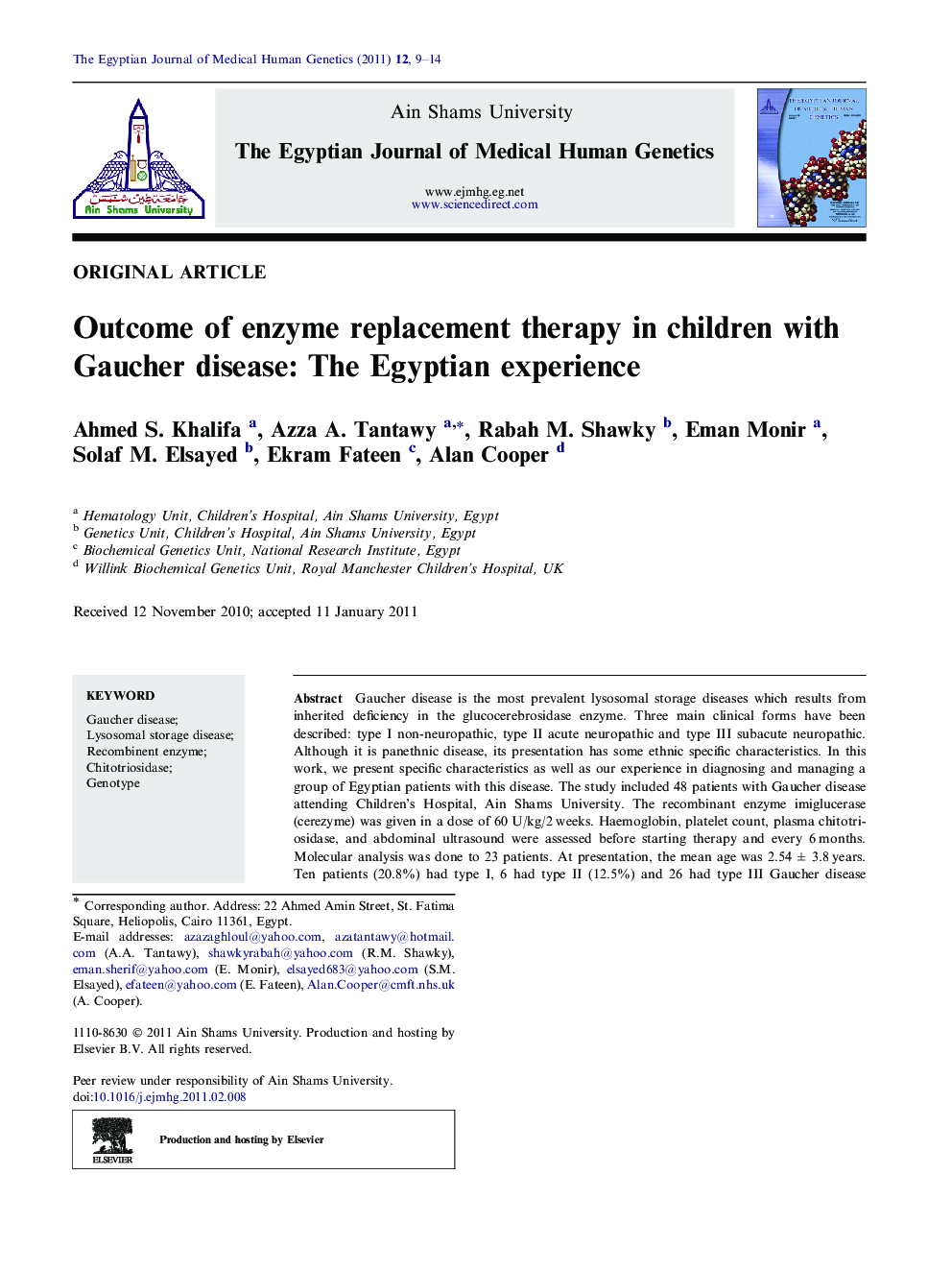| کد مقاله | کد نشریه | سال انتشار | مقاله انگلیسی | نسخه تمام متن |
|---|---|---|---|---|
| 2178284 | 1549638 | 2011 | 6 صفحه PDF | دانلود رایگان |

Gaucher disease is the most prevalent lysosomal storage diseases which results from inherited deficiency in the glucocerebrosidase enzyme. Three main clinical forms have been described: type I non-neuropathic, type II acute neuropathic and type III subacute neuropathic. Although it is panethnic disease, its presentation has some ethnic specific characteristics. In this work, we present specific characteristics as well as our experience in diagnosing and managing a group of Egyptian patients with this disease. The study included 48 patients with Gaucher disease attending Children’s Hospital, Ain Shams University. The recombinant enzyme imiglucerase (cerezyme) was given in a dose of 60 U/kg/2 weeks. Haemoglobin, platelet count, plasma chitotriosidase, and abdominal ultrasound were assessed before starting therapy and every 6 months. Molecular analysis was done to 23 patients. At presentation, the mean age was 2.54 ± 3.8 years. Ten patients (20.8%) had type I, 6 had type II (12.5%) and 26 had type III Gaucher disease (66.7%). The commonest genotype was homozygous L444P which was present in 13 patients (56.5%) followed by homozygous N370S; found in three patients (13.04%). Follow up after enzyme replacement therapy revealed a significant increase in weight and height, haemoglobin level and platelet count and slow reduction in the liver span and spleen length. Bone manifestations showed slow but complete improvement while neurological and respiratory manifestations were partially ameliorated with individual variations. To conclude, since most of Egyptian children with GD have type III disease and L444P/L444P genotype, a minimum dose of 60 U/kg/2 weeks should be maintained until adulthood. Higher doses started at an early age may delay the progression of neurological symptoms. Pulmonary involvement is not rare in Egyptian patients and may respond to dose increase or dose fractionation. Cardiovascular and renal involvement should be further studied in our population.
Journal: Egyptian Journal of Medical Human Genetics - Volume 12, Issue 1, May 2011, Pages 9–14